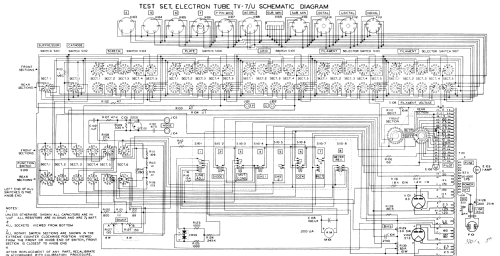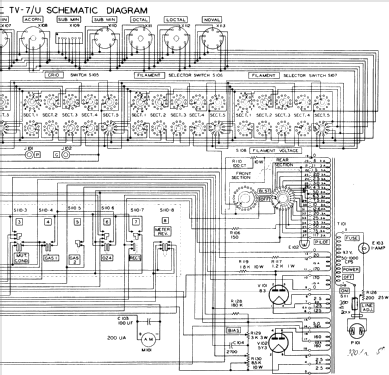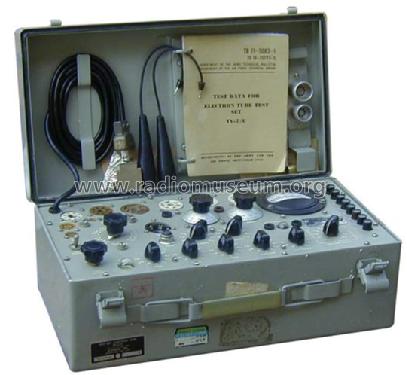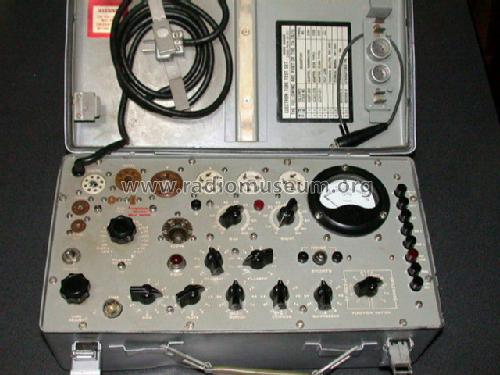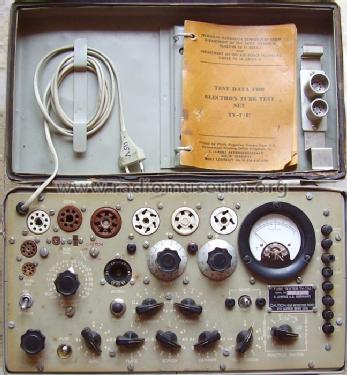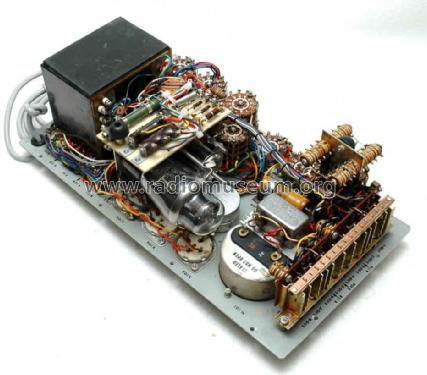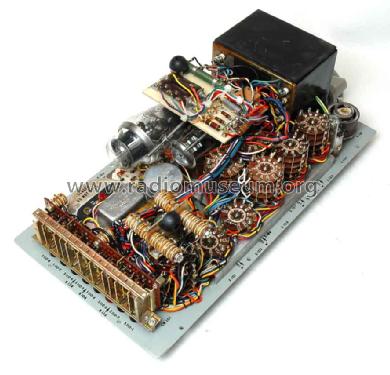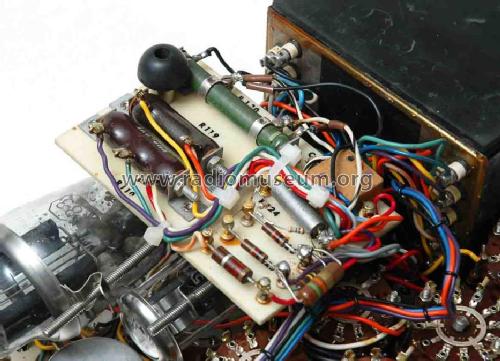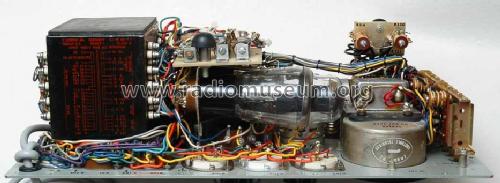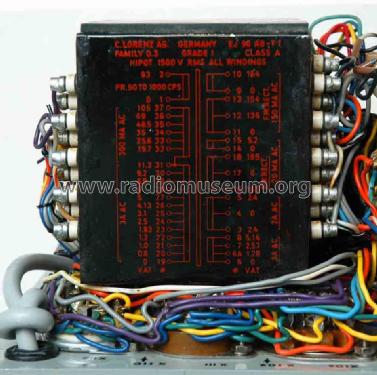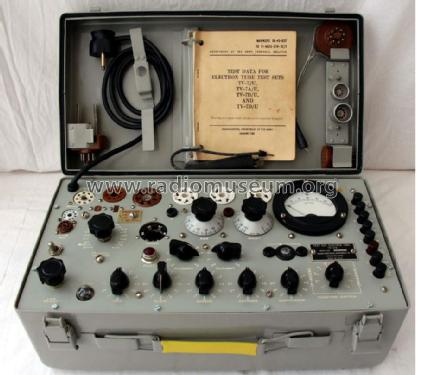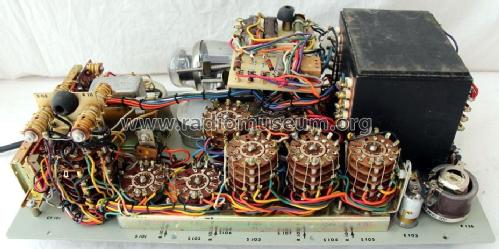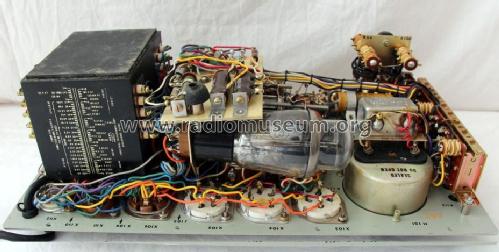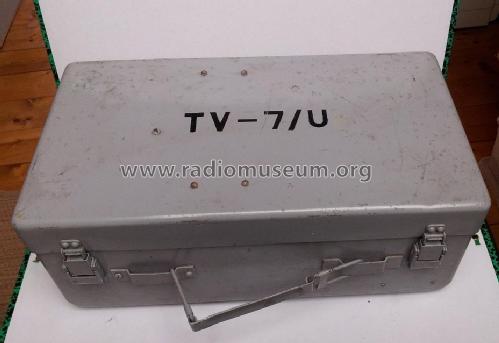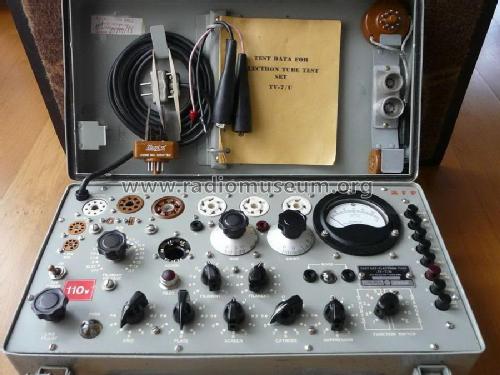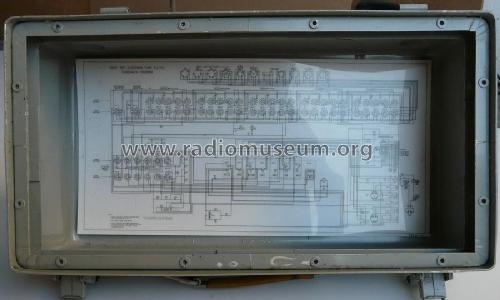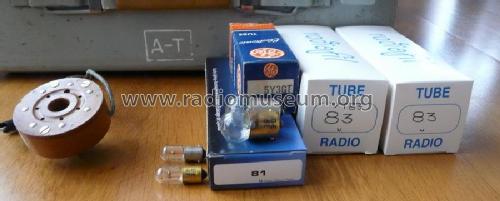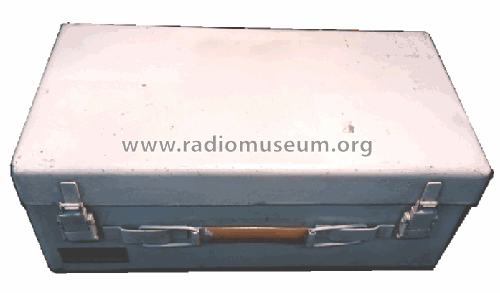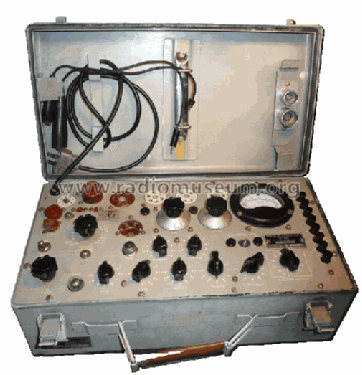Tube Tester TV-7 U
MILITARY U.S. (different makers for same model)
- Produttore / Marca
- MILITARY U.S. (different makers for same model)
- Anno
- 1953 ?
- Categoria
- Strumento da laboratorio
- Radiomuseum.org ID
- 68935
Clicca sulla miniatura dello schema per richiederlo come documento gratuito.
- Numero di tubi
- 2
- Gamme d'onda
- - senza
- Tensioni di funzionamento
- Alimentazione a corrente alternata (CA) / 105-125 Volt
- Materiali
- Mobile di metallo
- Radiomuseum.org
- Modello: Tube Tester TV-7 U - MILITARY U.S. different makers
- Forma
- Soprammobile con qualsiasi forma (non saputo).
- Dimensioni (LxAxP)
- 440 x 220 x 155 mm / 17.3 x 8.7 x 6.1 inch
- Annotazioni
-
Tube Tester TV-7 /U.
This model /U was built by Supreme.
This model was also produced for NATO by Lorenz, Germany.
- Fonte esterna dei dati
- Ralf Sürtenich
- Letteratura / Schemi (4)
- -- Schematic
- Altri modelli
-
In questo link sono elencati 408 modelli, di cui 360 con immagini e 215 con schemi.
Elenco delle radio e altri apparecchi della MILITARY U.S. (different makers for same model)
Collezioni
Il modello Tube Tester fa parte delle collezioni dei seguenti membri.
Discussioni nel forum su questo modello: MILITARY U.S.: Tube Tester TV-7 U
Argomenti: 3 | Articoli: 8
I have created several adaptators for m'y TV7/U:
rimlock
transco
english (for ARP3)
Telefunken (ECH11 etc...)
european 4 or 5 pins (E442 E409 etc..)
Allegati
- TV7/U adaptators (1857 KB)
Olivier Palix, 20.Sep.24
I have a TV7/U,it use a bulb as a fuse.It is important to use the correct type: 81,(6,5V,1,02A;6,6W).
I have found that types 81 & 47 (pilot lamp) bulbs are used in Gottlieb flippers, so it is easy to buy them at sellers of flippers spares parts (in France there is one on Ebay.fr,he sell box of 10 at very reasonnable price)
On the picture,the; yellow bulb is original (GE81),he silver one is a 81 for flipper (exactly similar to original).
I have tested the spares,they runs as originals ones.Using european cars 6V bulbs is also a solution,but they do not complies exactly (6V; 5W ),flippers spares are preferables.
Olivier Palix
Allegati
Olivier Palix, 12.Sep.15
TV-7 military tube testers are appreciated and widely used because of their versatility, ruggedness and simple operation. Unfortunately the meter just gives arbitrary values, from 0 to 120, and data tables indicate the minimum acceptable value for each tube.
But the arbitrary values of the meter can be easily converted to the actual mutual conductance Gm, expressed in micromhos, using the table below.

Intermediate values can be readily calculated by linear interpolation.
The table comes from the TM 11-6625-274-12 manual, covering models TV-7/U, TV-7/AU, TV-7/BU and TV-7/DU. Probably it should also apply to TV-7/CU.
Emilio Ciardiello, 27.Dec.09
